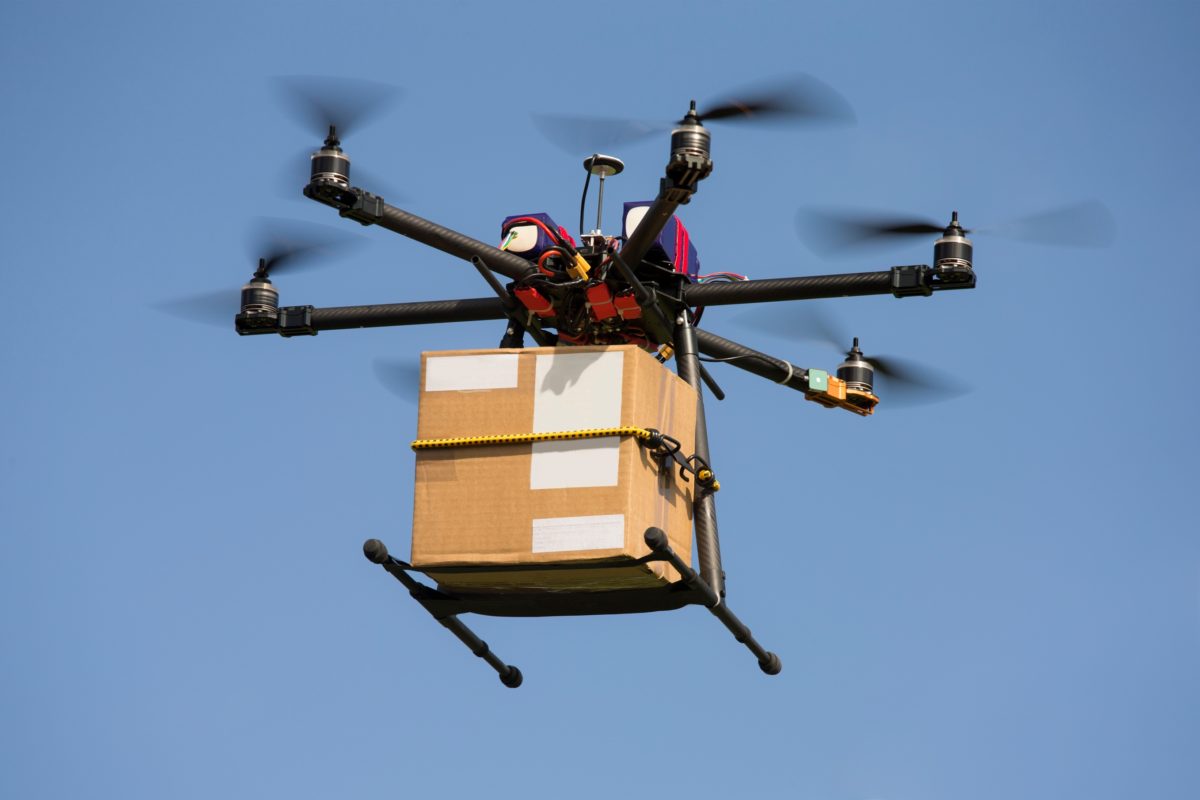The fast-growing world population and rapid concentration of people in urban areas, both in the developed and developing world will lead to difficulties in transportation. Capacity constraints in the transport sector can act as a brake on economic growth and, therefore, both governments and businesses are looking for new modes of operation. Unmanned aerial vehicles (UAVs), also known as “drones” might be the solution to this.
A drone is an aircraft that has the capability of autonomous flight, which means they can follow a mission from point to point. Functions such as camera, and GPS can enable a drone to complete certain tasks. Currently, companies such as DHL and Amazon are intensively experimenting with UAV technology with a primary focus on deploying a delivery network for packages. Also, drones can be used to secure transport instead of transporting packages itself. For example, imagine a drone exploring the circumstances at sea.
Research from the National Aeronautical Centre revealed that 42% of logistics carriers plan to use UAVs for the distribtution of cargo in the future. In the near future drones are probably going to be used for transportation of smaller parcels in the first and last mile of the supply chain, particularly as e-commerce grows. Perhaps even more attractive to logistic suppliers is the use of drones to serve smaller, less-densely populated areas.
Based on current trends in transportation it is highly likely that UAVs become more reliant of the Internet of Things and connectivity. Understandably, flying objects might cause anxiousness in terms of safety in public order, but the fact that computers make fewer errors than humans in nearly every aspect should calm to some extent. Moreover, benefits such as the reduction of exhaust gases, and the ability to bring around medicins and food very radiply 24 hours a day plead in favor of the development and adoption of delivery drones. Especially in terms of accountability and efficiency the transport drones are expected to be game-changers and, therefore, a future is likely in which package logistics exist primarly of shipping and short range flying.
Before it is possible to adopt UAVs, one of the biggest obstacles is a lack of regulation surrounding their use and the fact that the existing regulations does vary from country to country. So called ‘airspace management’ will be needed to minimise to collision risk with other UAVs or manned aircraft. Insurance markets will keep watching the development of applications and legislative frameworks while practical applications for UAVs are already underway. With some of the major logistic players investigating the growth opportunities for a successful, revolutionary innovation the adoption of UAVs in transportation might be sooner than one would expect.

